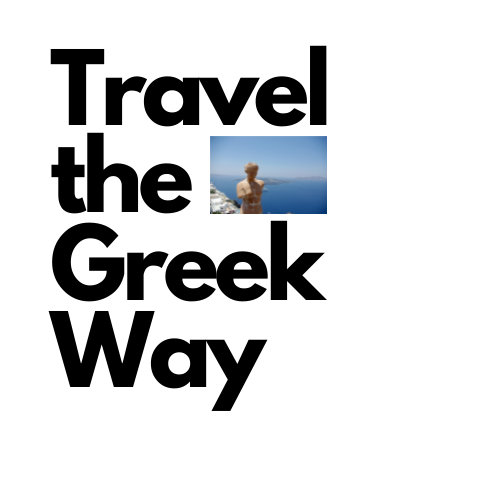Are you prepared to stray from the beaten path on your next vacation? Welcome to Livadia Greece an authentic small town about a 90-minute drive northwest of Athens. The most striking characteristic of the town is the River Erkyna, which crosses Livadia, creating beautiful scenery and canals that you can explore by walking around the town.
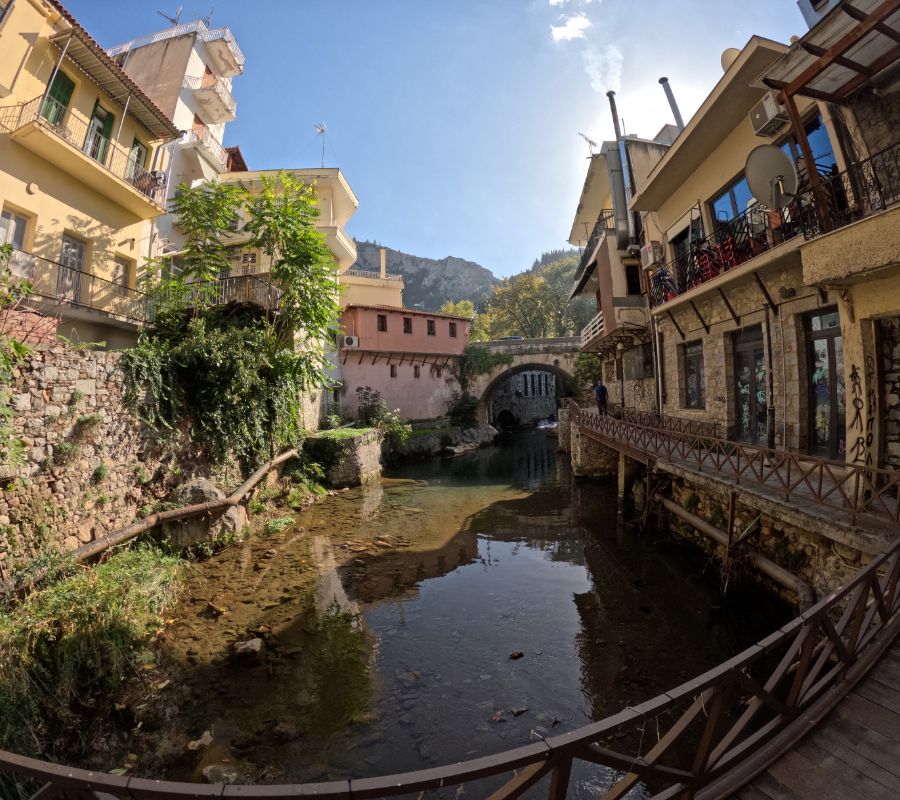
Like every single town and island in Greece, Livadia has also an array of unique historical sites such as the medieval castle and the sanctuary of Trophonius. However, if you were to ask the Greeks what Livadia is famous for, they would reply: ‘The best souvlaki in Greece!’“
I visited with a friend recently Livadia, we explored the town, hiked the remains of a castle and of course, we had a souvlaki to honor the tradition 😀
Without further ado, let me share my experience of what to do in Livadia, a beautiful mainland Greek town!
*Some of the links in this post are affiliate links. That means I may make a commission if you click and buy. The commission comes at no additional cost to you.
My Latest Livadia Video
Livadia’s got this cool river called Trophonius. Legend has it, it’s named after this ancient Greek god, Trophonius, known for oracles. The river adds a mystical vibe to Livadia, making it a sweet spot for a stroll or some chill time by the water.
Fast Facts for Livadia Greece
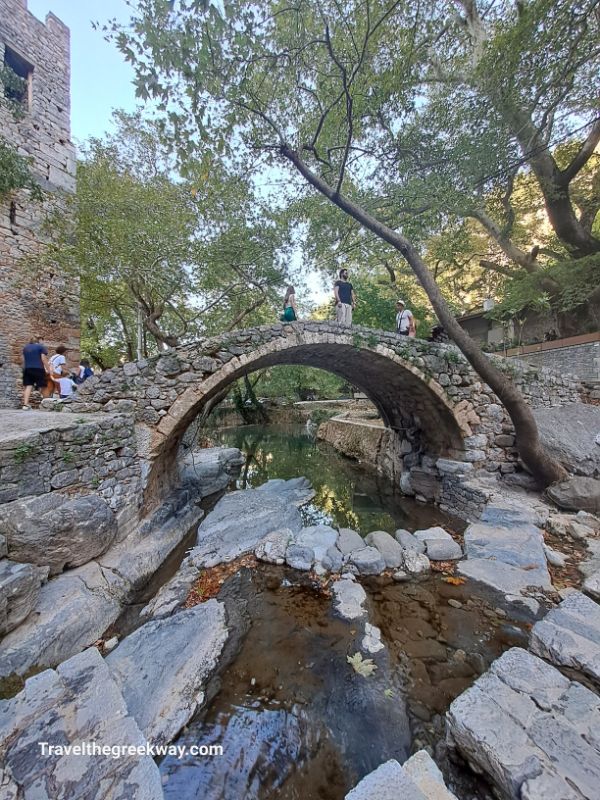
- The population of the town, according to the 2021 census, is 22,103.
- The area produces cotton, tobacco, grains, and livestock, and its large metal construction industry employs a significant portion of the nearby population.
- If you are heading to Delphi, a stop in Livadia makes a lot of sense as it is on the way to the archaeological site.
- Best taverns in Livadia: Ta Kopsidia, O Fotis, Kalligefston.
1. Nature Lovers, Check Out Krya Springs!
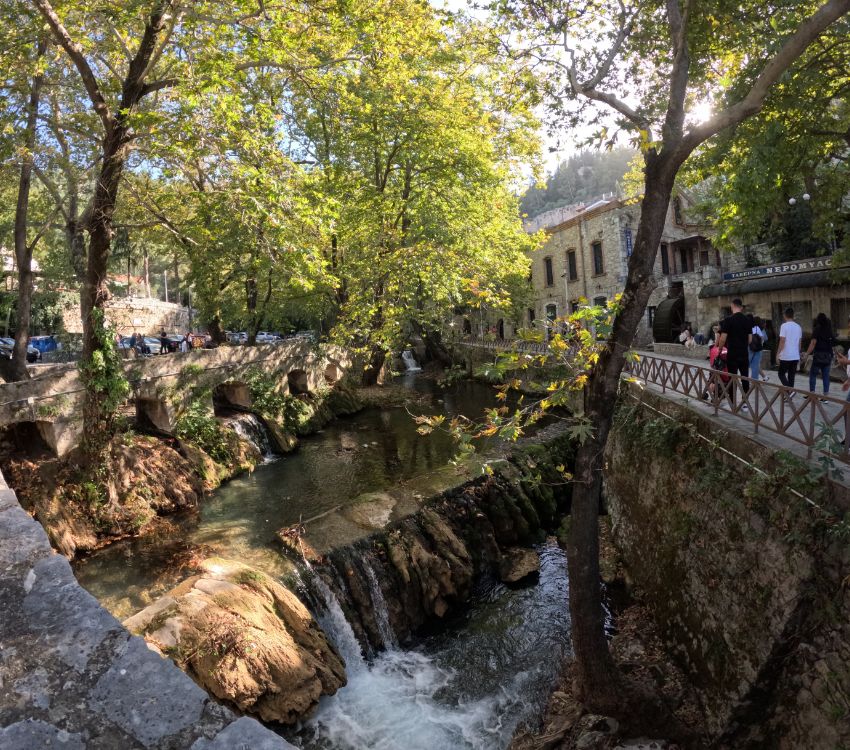
Kick off your day in Livadia Greece with a stroll to the Krya Springs of Erkyna River (Krya Nera).
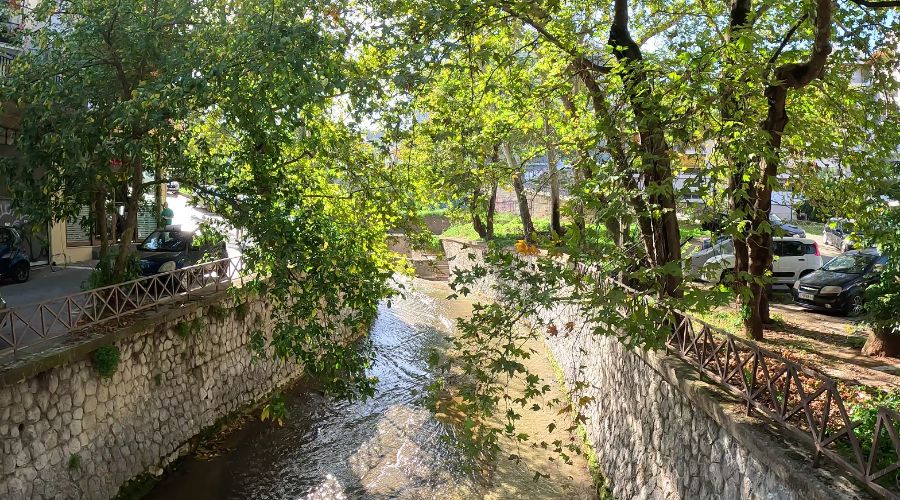
These springs are tucked away in a gorge in the heart of Livadia, characterized by age-old plane trees, numerous small waterfalls, cobblestone alleys, and stone-arched bridges
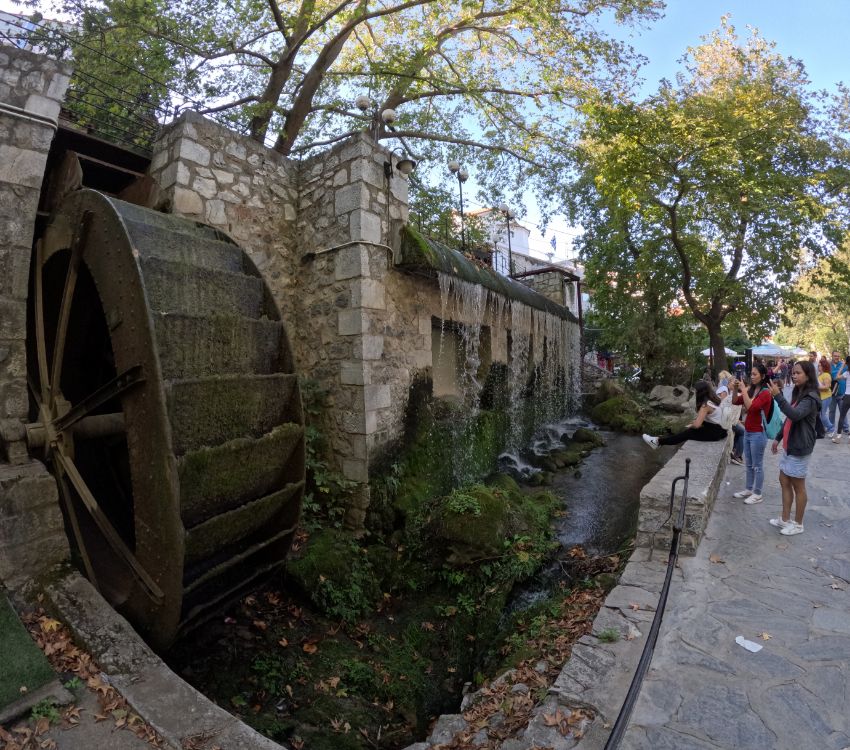
In the 19th century, the rushing waters of the river were utilized to turn the wheels of mills and the machinery of factories, significantly contributing to the industrial development of the town. Today, the Water Mill and the Water Press stand as two characteristic buildings from that era.
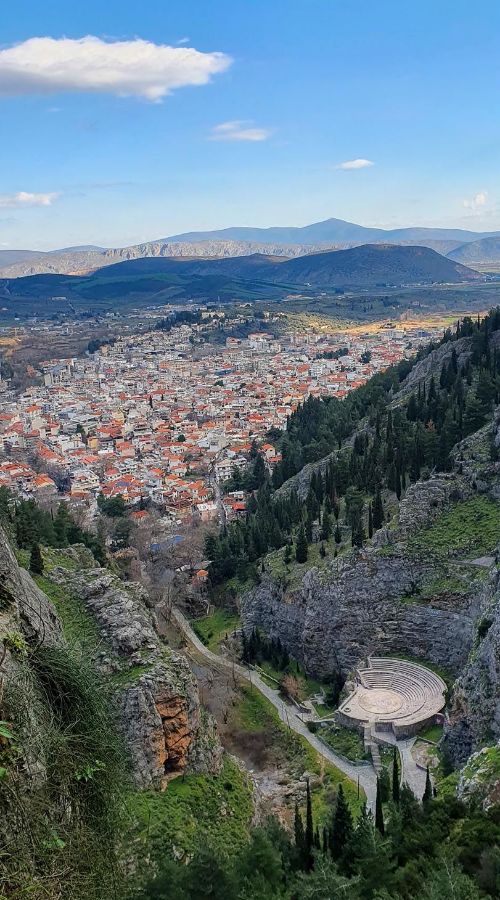
Continue further into the gorge, and you will discover the stone theater of Livadia. If you’re up for a climb of 700 steps, you can also reach the Chapel of Saint Jerusalem perched on the rock. Either way, the Krya Springs is your go-to spot for a nature fix.
2. Relax with a Cup of Coffee at the Erkyna River
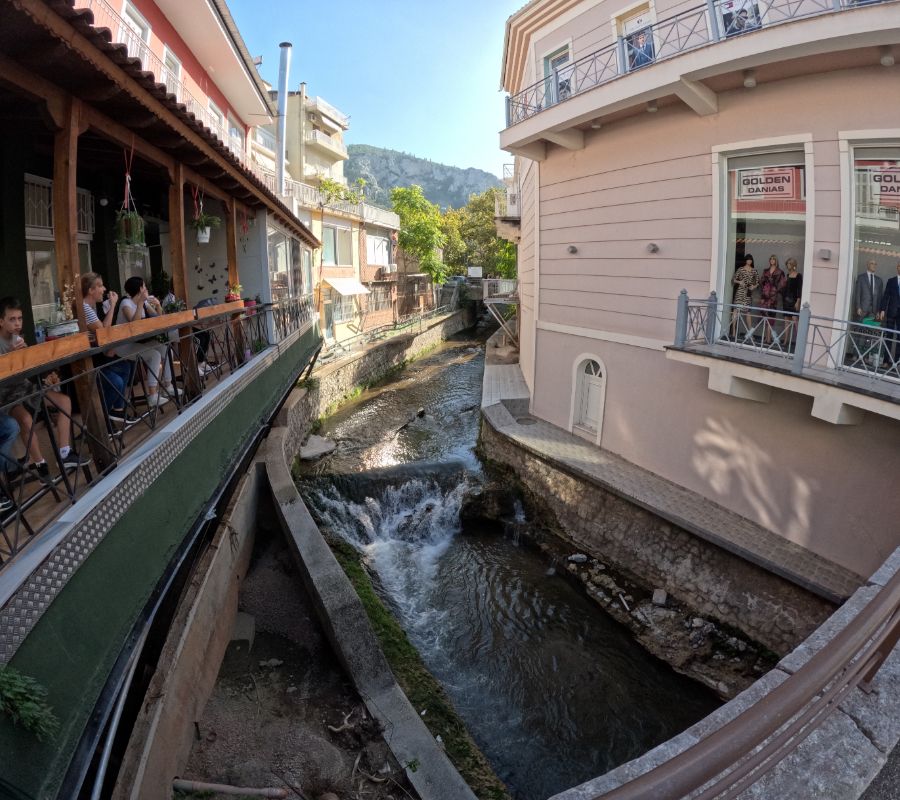
One of the best things to do in Livadia Greece is to find a spot and relax in front of the river! Along the Erkyna River, you will come across recreational parks, small taverns, restaurants, and cozy cafes. You can savor a cup of local coffee or a meal while listening to the gentle rustle of the river.
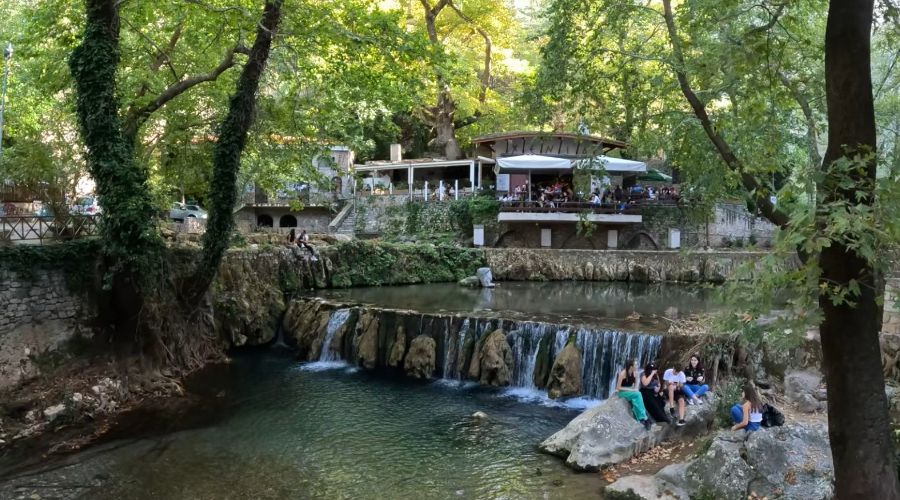
The most popular cafe in the area of Krya Springs is Xenia Cafe, located at the end of the river near the Oracle of Trophonius. The cafe is situated in the most idyllic place and is one of the most family-friendly activities in Livadia, Greece. It’s the perfect spot to unwind after a long day of exploration and capture countless photos.
3. Delve into the Myths at the Oracle of Trophonius
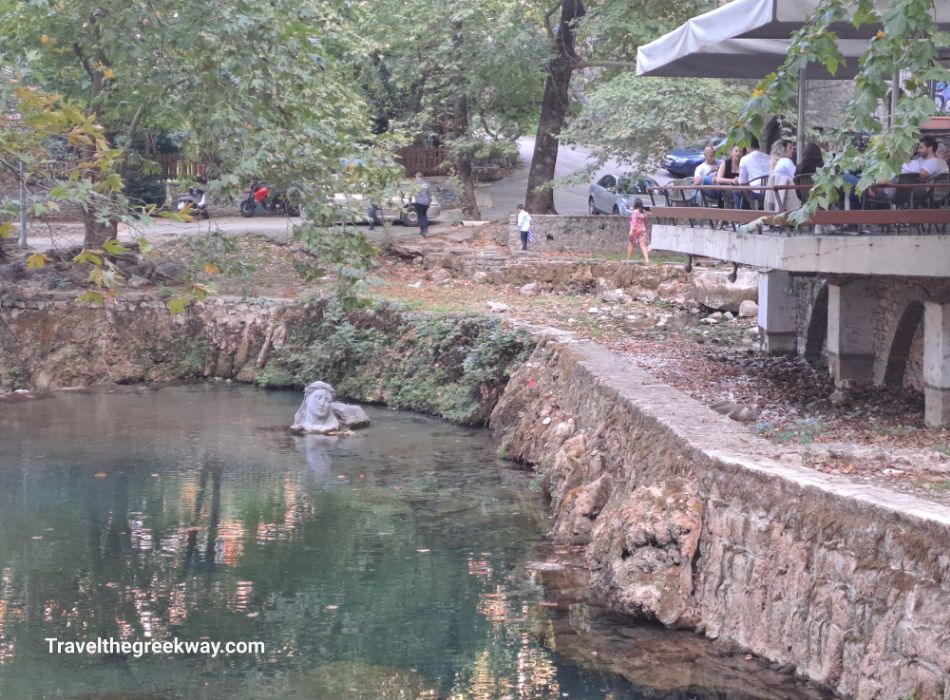
According to Greek mythology, Erkyna was a river Nymph, the daughter of Trophonius, and a friend of Persephone, Demeter’s goddess daughter. While the two girls were playing with a goose in the Trophonius Grove, the bird flew away and hid in a cave. In an attempt to catch it, Persephone moved the stone at the entrance of the cave, causing the swift overflow of furious water. A spring then sprouted from the earth, becoming the source of the Erkyna River.
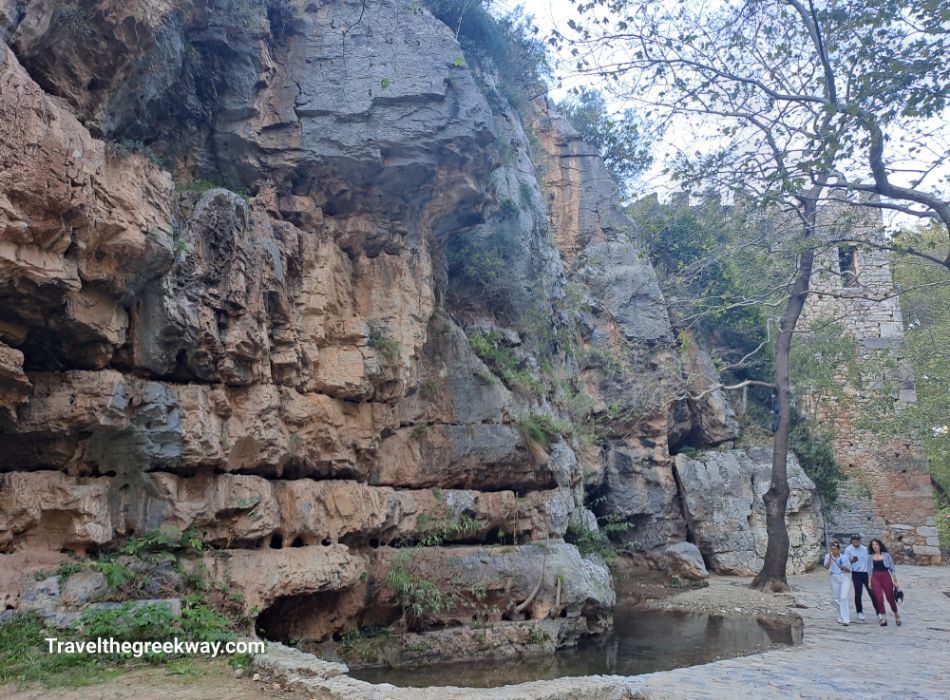
In the same spot, the ancient Beotians founded the Trophonius Oracle, also known as the Cave of Trophonius (550 BCE). The Oracle of Trophonius was one of the five renowned oracles in Greece. The other four were the Oracle of Apollo at Delphi, the Oracle of Zeus at Dodona, the Oracle of Abae in Phocis, and the Oracle of Amphiaraus in Oropos, Attika.
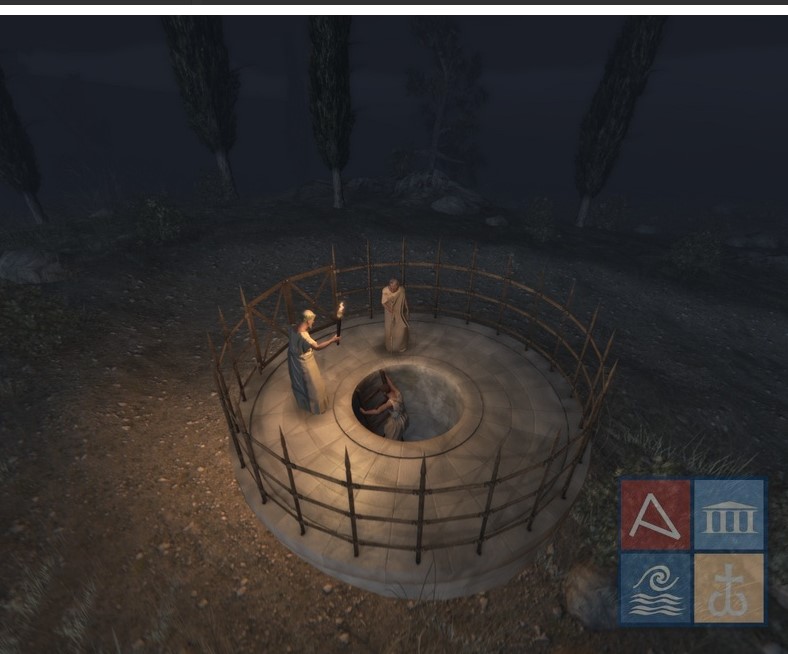
The pilgrims seeking oracles had first to bathe in its waters, make an offering, and then descend into the dark and narrow cave. Inside the cave, the seeker would experience various visions and encounters with Trophonius, often described as both enlightening and terrifying. To descend into the cave of Trophonios became a proverbial way of saying “to suffer a great fright”. This saying is alluded to in Aristophanes’ Clouds.
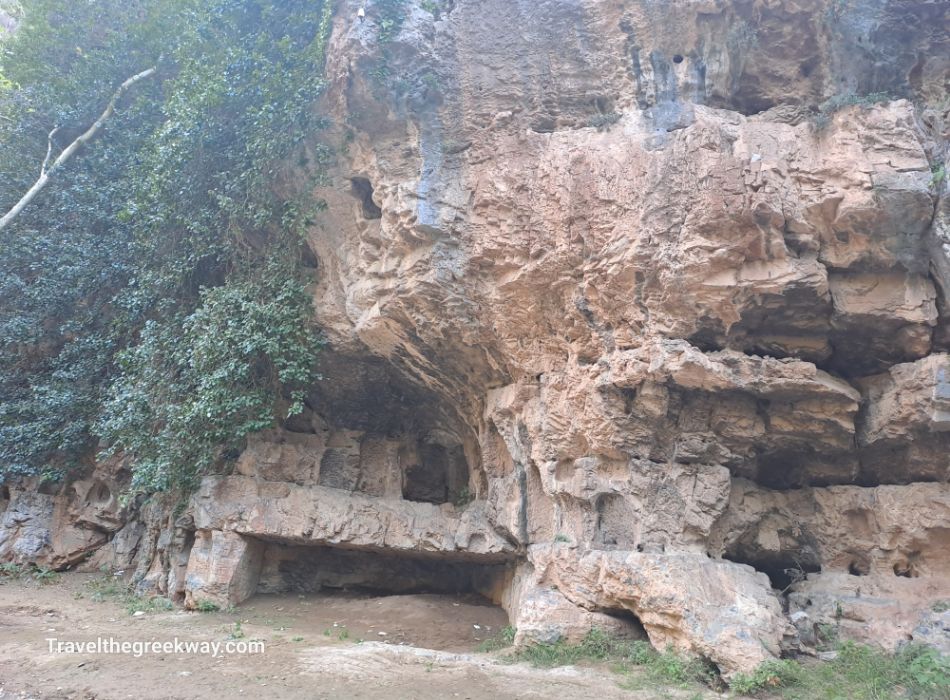
All the information we know today comes mostly from Pausanias, the ancient Greek traveler who visited the Oracle and participated in the ritual (2nd century CE).
There is no entrance fee as there are very few remains of the once mighty oracle. The excavations have revealed various findings that you can visit in the nearby Chearonea Museum. The most significant discovery, however, is a dedicatory relief to Trophonius found in the bed of the Erkyna River in 1931. Today, it is exhibited at the National Archaeological Museum of Athens.
4. Step Back in Time to the Medieval Castle of Livadia Greece
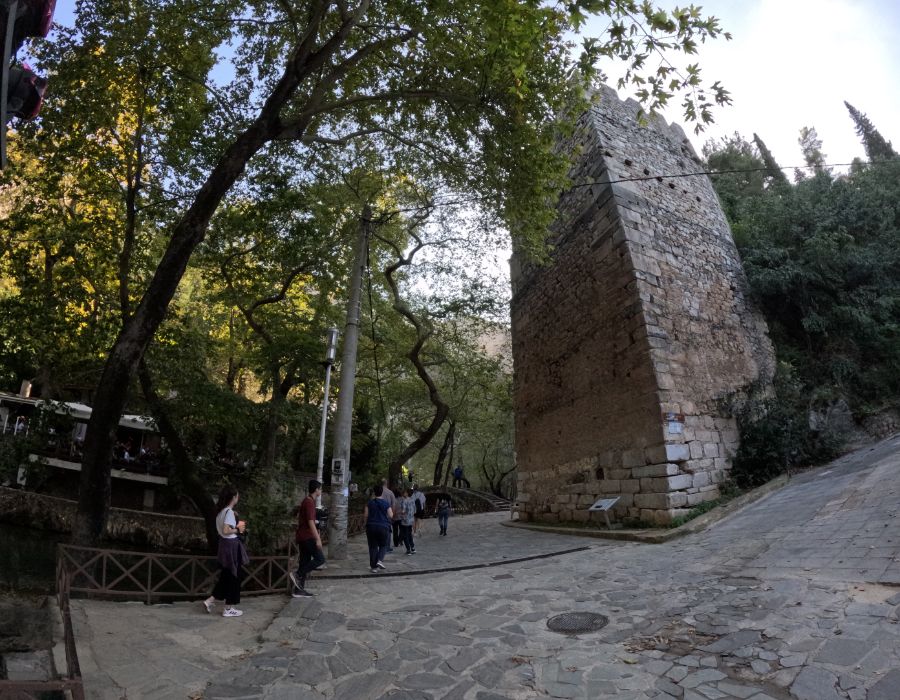
Archaeologists believe that the Oracle of Trophonius was likely situated on the rocky hill that overlooks the river, where the remains of the Castle of Livadia stand today. This ancient castle was reconstructed first by the Byzantines and later by the Franks.
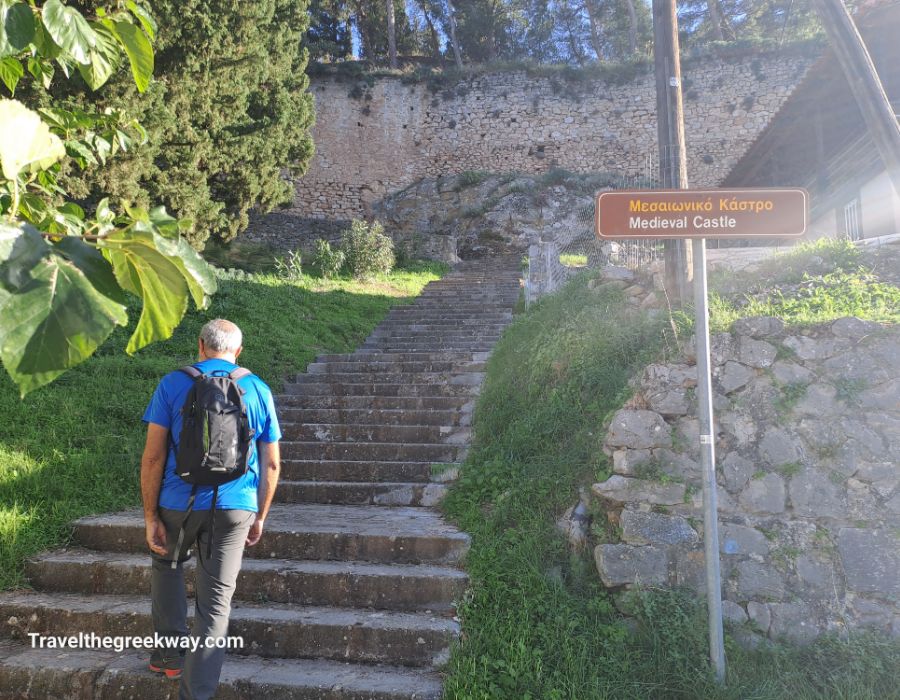
However, on March 15, 1311, the Catalans, in a victorious battle against the Franks, became the rulers of the region. The Catalans are considered the builders of the Castle of Livadia Greece in the form that is preserved today.
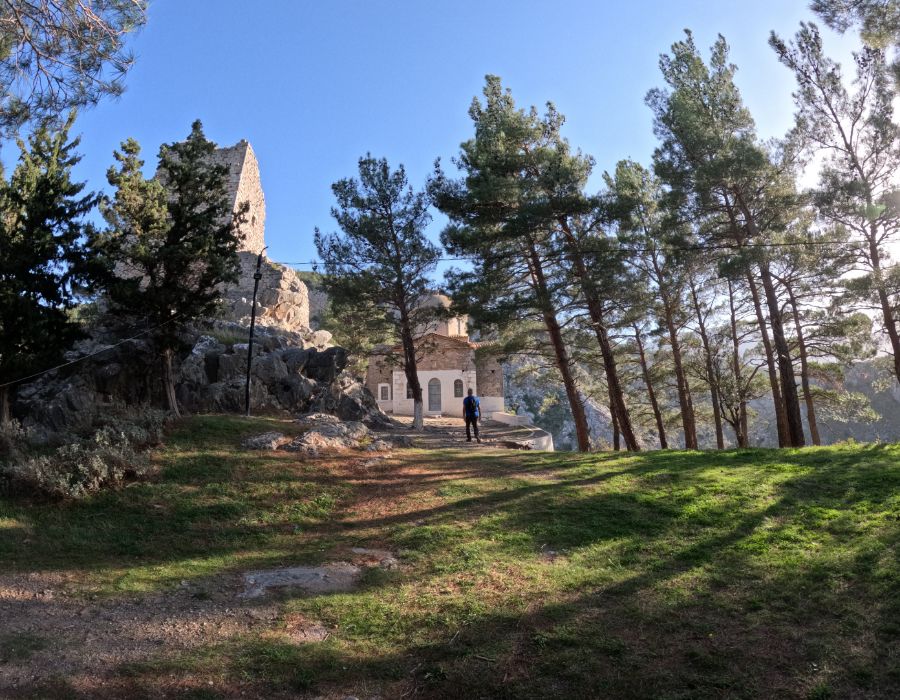
To get to the entrance of the castle you take the very steep uphill having the walls on your left side. 15 minutes later you will find a small parking lot where the entrance is.
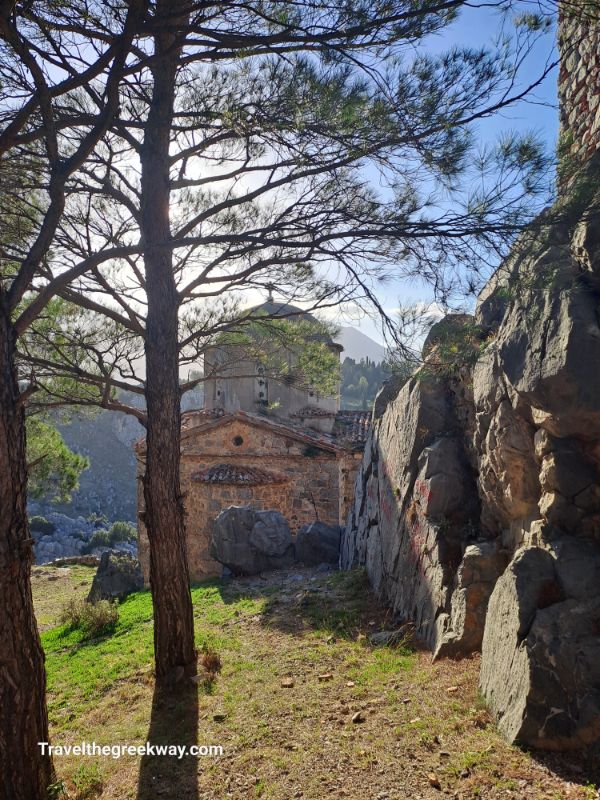
Not only do you get killer views from up there, but you’ll also get a sneak peek into Greece’s past. At the top, you’ll find the church of Agia Sophia. Entrance is free, and walking around the Castle is one of the top things to do in Livadia.
History Tip: During the Greek War of Independence against the Ottomans the castle served as the stronghold of the Greeks and the Greek flag was raised during the Revolution of 1821.
5. Discover the Temple of Zeus Basileus
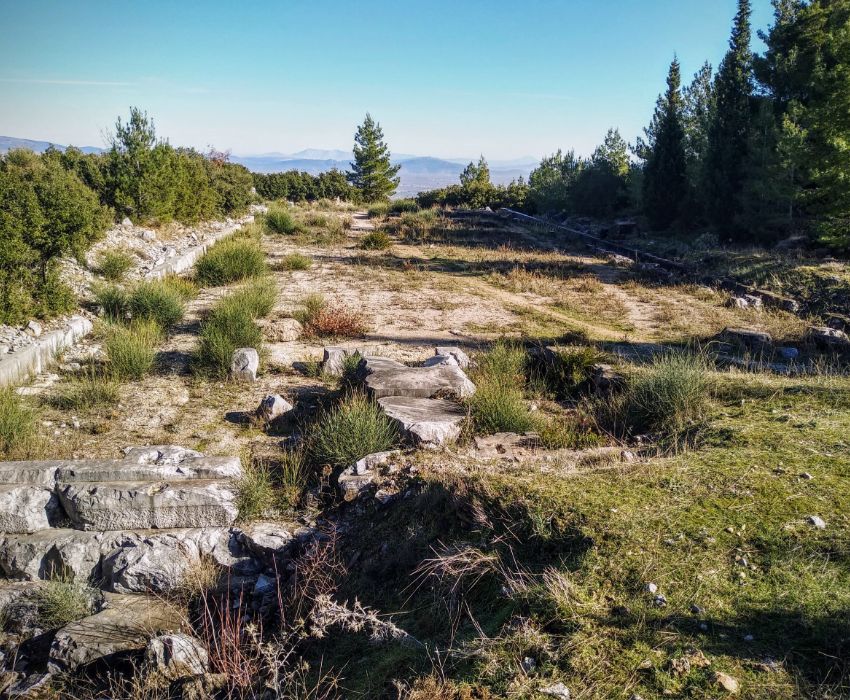
Further west from the Castle, offering a commanding view from the hill of Profitis Ilias, lie the remains of a large temple of Zeus Basileus. The temple was colossal, ranking among the largest ever built in the Hellenic region. It mainly consisted of bases for statues and offerings erected in honor of the victors of the Basileia, the fifth most important games in ancient Greece, following the Olympics, Isthmia, Pythia, and Nemean.
The city of Lebadia and the unfinished temple of King Zeus were destroyed by Sulla in 86 BCE, following his victories in Orchomenos and Chaeronea.
As soon as you arrive, you will see a small church, and the remains of the temple are just behind it.
6. Foodies, Rejoice! Top Thing to Do in Livadia Greece!
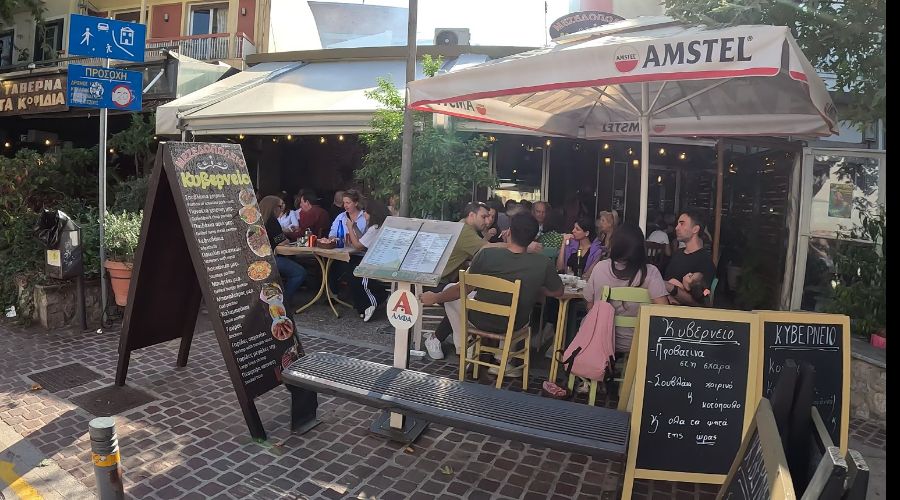
Don’t even think about leaving Livadia without indulging in the local cuisine. A plate of souvlaki is a must, and meat lovers will find themselves in heaven. Every dish here offers a delightful taste of traditional Greek cooking, and it’s wonderful.
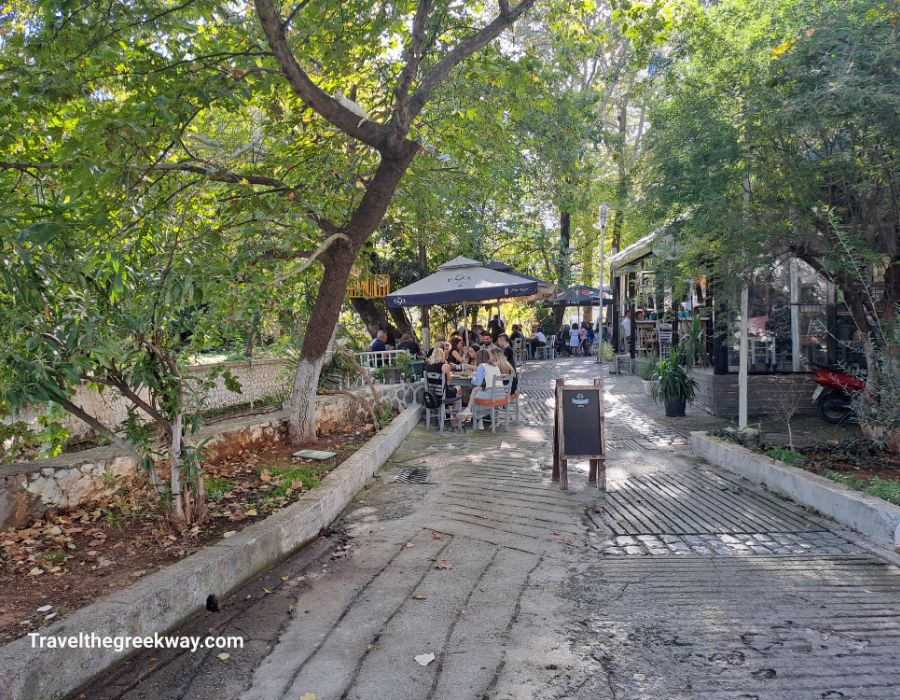
Where is the best place to have a meal? Follow the enticing food aromas wafting from taverns, locate one bustling with locals, and you won’t be disappointed.
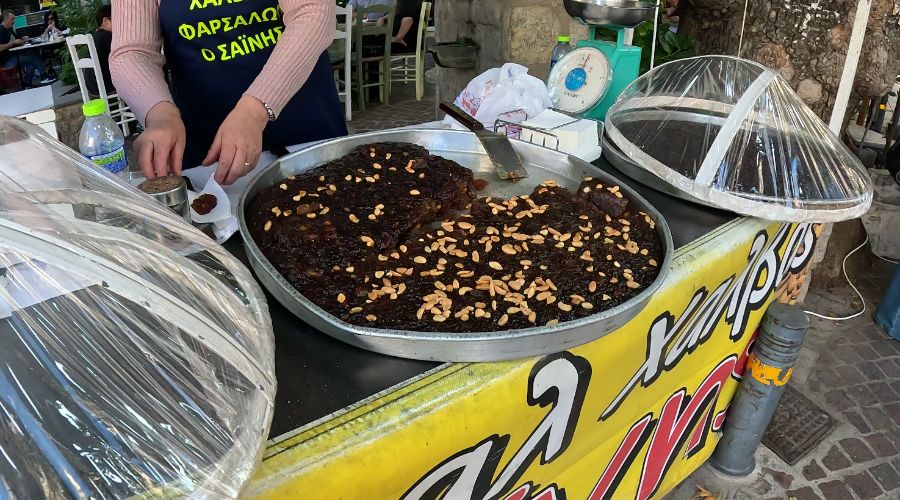
You can begin your food tasting in Livadia at the canteen near the bus station, known for its famous mutton souvlaki. I also tried a generous portion of the local halva with a caramelized top—yummy!
7. Visit Livadia’s Historical and Ethnological Museum
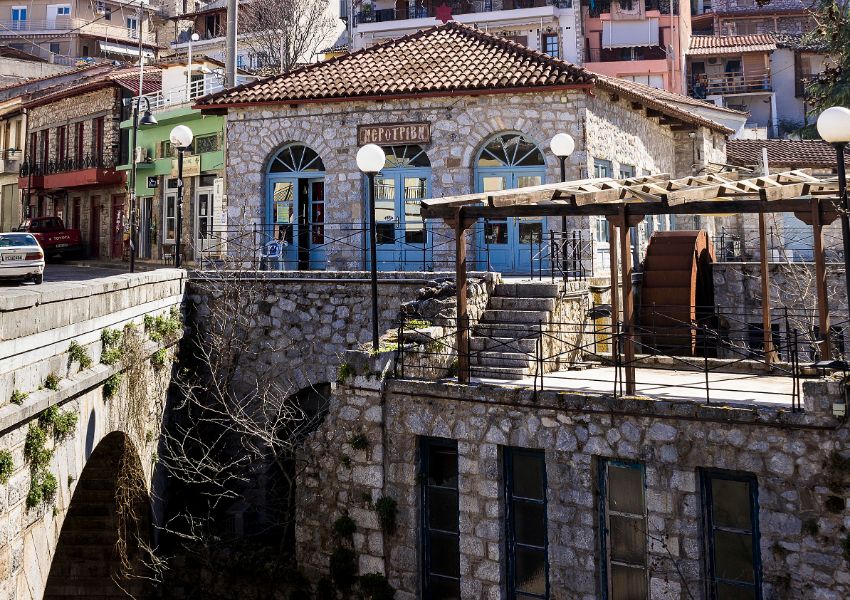
At the entrance of the area of Krya Springs stands a stone building with the sign ‘ΝΕΡΟΤΡΙΒΗ’ which was mainly used for washing fabrics and fleece in the past. Today, the Nerotribi building houses the Historical and Ethnological Museum of Livadeia.
It’s filled with antique objects, traditional clothes, and interesting documents—like stepping into Livadia’s past and everyday life. The museum is open daily except for Mondays between 08:00 and 14:00.
8. Visit the Monastery of Osios Loukas
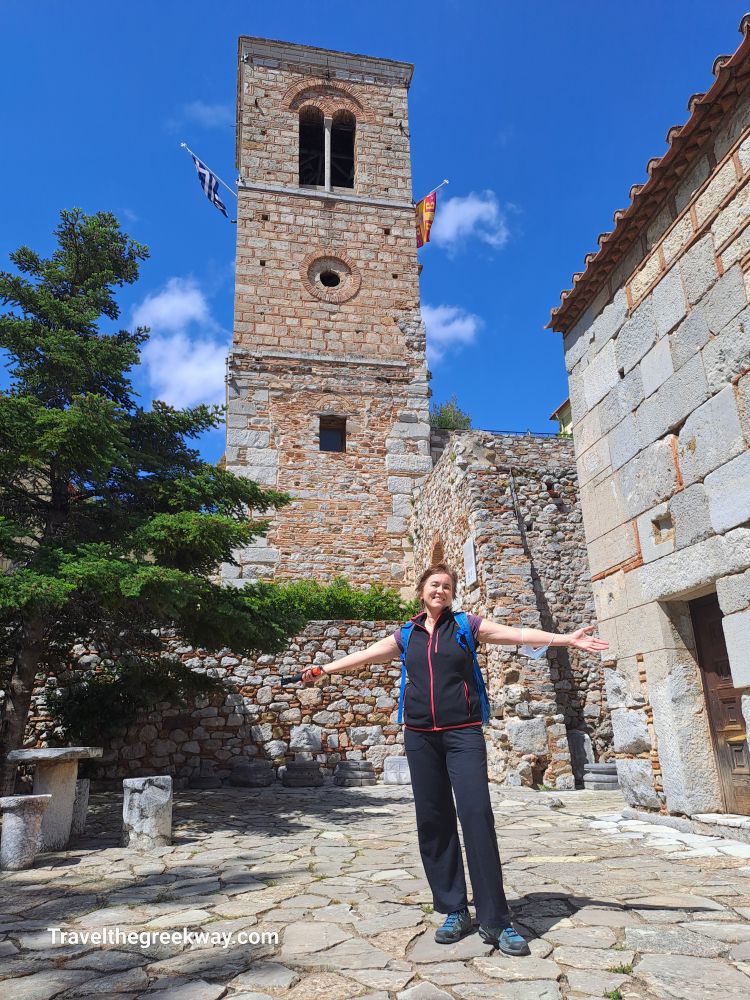
Located 34 km west of Livadia, on the way to the Delphi archaeological site, you can visit one of the most important Byzantine monasteries in the Greek Orthodox Church—the Hosios Loukas Monastery. It is listed as a UNESCO World Heritage Monument for its ‘Outstanding Universal Cultural Value.
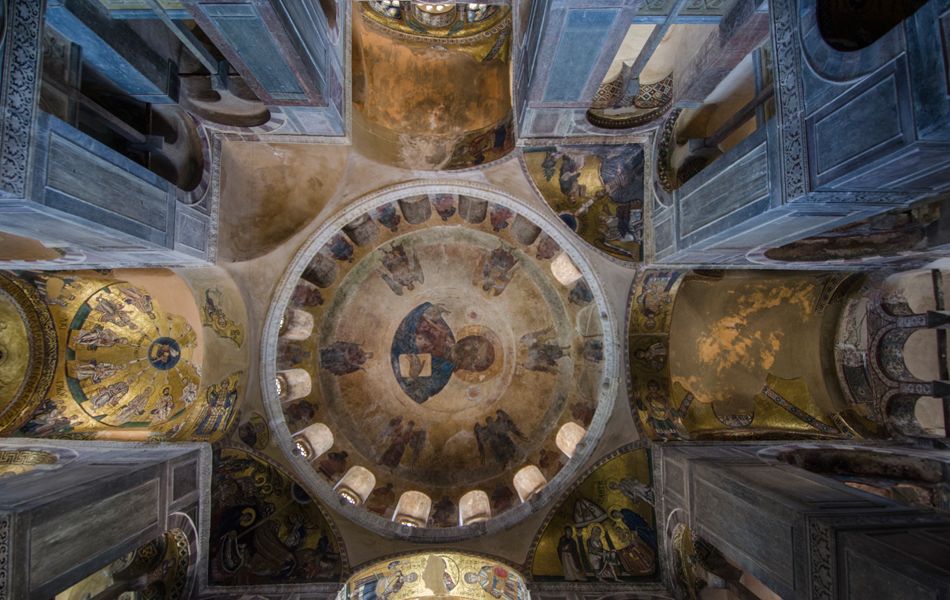
The Monastery preserves an almost intact group of wall mosaics that embody the highest degree of artistic expression of the Byzantine culture.
The complex of buildings is built on the western slopes of Mount Helicon near ancient Steiri. The founding of the monastery is associated with the presence of the local charismatic monk Loukas (Luke) of Steiri, who lived there during the last years of his life, from 947 to 953 CE. It is daily open between 8.30 am and 3.30 pm.
9. Explore Arachova and Delphi
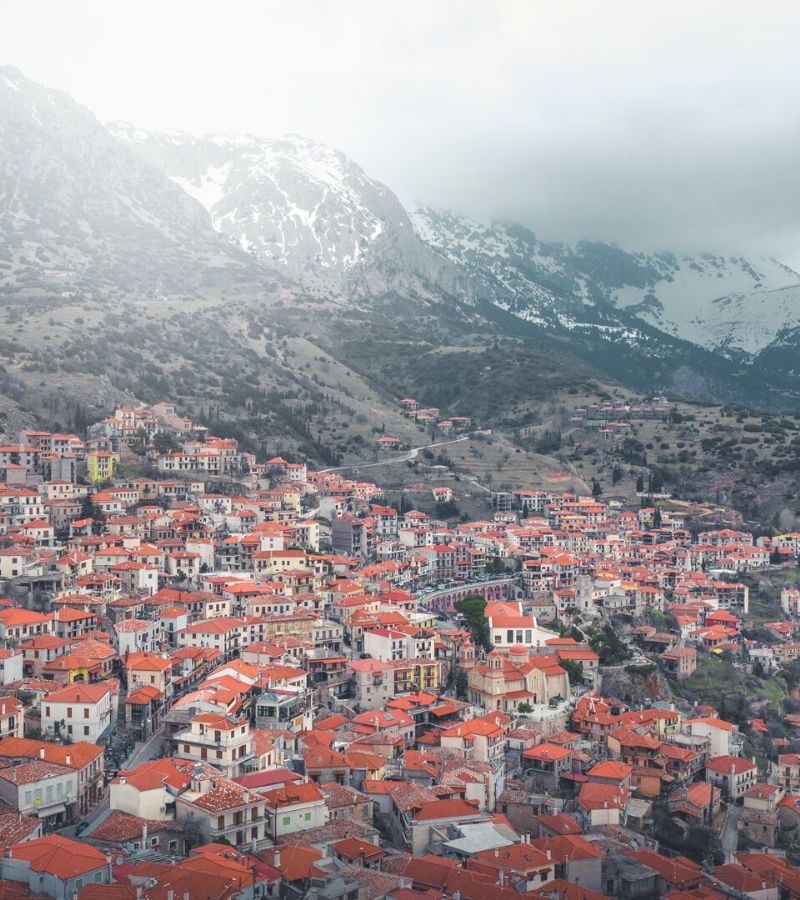
Arachova, a picturesque mountain town, features traditional architecture, vibrant markets, and a lively atmosphere. Its proximity to the ancient site of Delphi, once considered the center of the world in Greek mythology, adds a layer of historical allure.
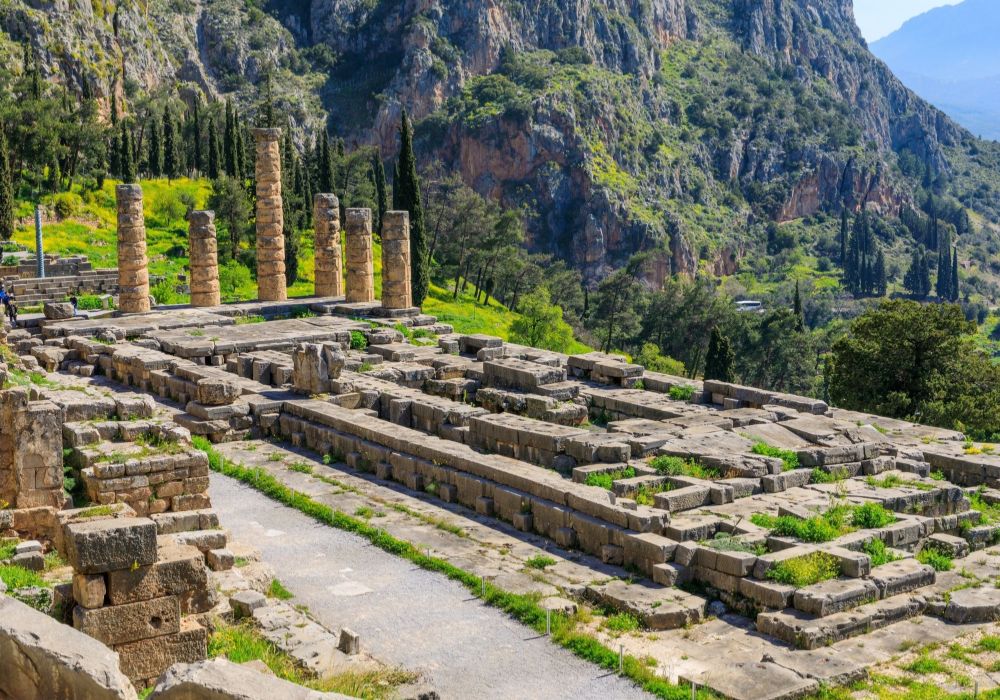
Delphi’s archaeological treasures, including the Temple of Apollo and the Oracle, offer a mesmerizing journey into the past. Visitors are enchanted by the breathtaking views of Mount Parnassus, the vast olive tree forest, and the Gulf of Corinth, creating an unforgettable experience that blends antiquity with modern Greek charm. Arachova, especially popular during winter, attracts guests visiting the nearby Parnassos ski center, the largest and most organized ski center in Greece.
Best Guided Tours in Livadia
I recommend you book guided tours organized by local travel agencies to enjoy and get to know Livadia and the surrounding sites. These are some of my favorite tours for the area:
- Delphi, Arachova, and Livadia Krya Springs, Private Day Tour
- Private 2Days Trip to Delphi, Arachova, Hosios Loukas & Thermopylae Tour
- Argolis Olympia Delphi & Meteora 4-Day Tour
History of Livadia Greece
Homer does not mention Livadia in his epic poems, the Iliad and the Odyssey, but many historians, including Pausanias, believe that it existed during the time of Homer, under the name of Mideia. Homer refers to it as such among the Boeotian cities that participated in the Trojan War as allies with Mycenae. Later, it is said to have been renamed Lebadia by the Athenian Lebades, who relocated its inhabitants to a neighboring hill.
During historical times, Livadia was renowned for the ancient Oracle of Trophonius, visited and consulted by figures such as Croesus, Mardonius, Aemilius Paulus, and others.
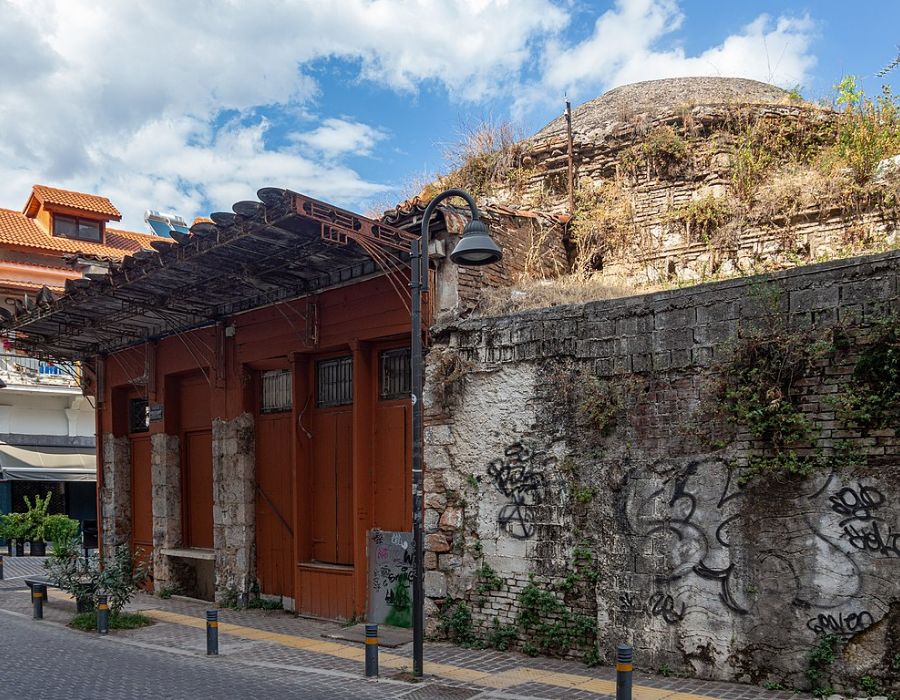
During the Byzantine period, Livadia did not experience significant development. In 1204 CE, it was given to the Franks, in 1311 to the Catalans, and in 1388 to the Florentines. Livadia was captured by Omar Bey in 1458 on behalf of Sultan Mehmed II the Conqueror, and he constructed a mosque that would become the center of Islamic life in the region for three and a half centuries. In February 1829, Livadia became part of Greece again.
Livadia Greece FAQ
Where to Stay in Livadia
There are not many accommodation choices in Livadia. A beautiful house I have singled out is the Ξύλινο Chalet Κτήμα Παππά which features a large garden, is child-friendly and boasts beautiful wooden decoration. It is located 6 km from Livadia.
Alternatively, Alternatively, I suggest staying in Arachova at the cozy and budget-friendly Patriko or the beautifully decorated Boutique Hotel Skamnos Arachova, which offers a mid-range option and includes an indoor swimming pool.
How Much Time Do I Need for Livadia?
You can see the most important sites in Livadia in 3 to 5 hours.
How to Get to Livadia from Athens
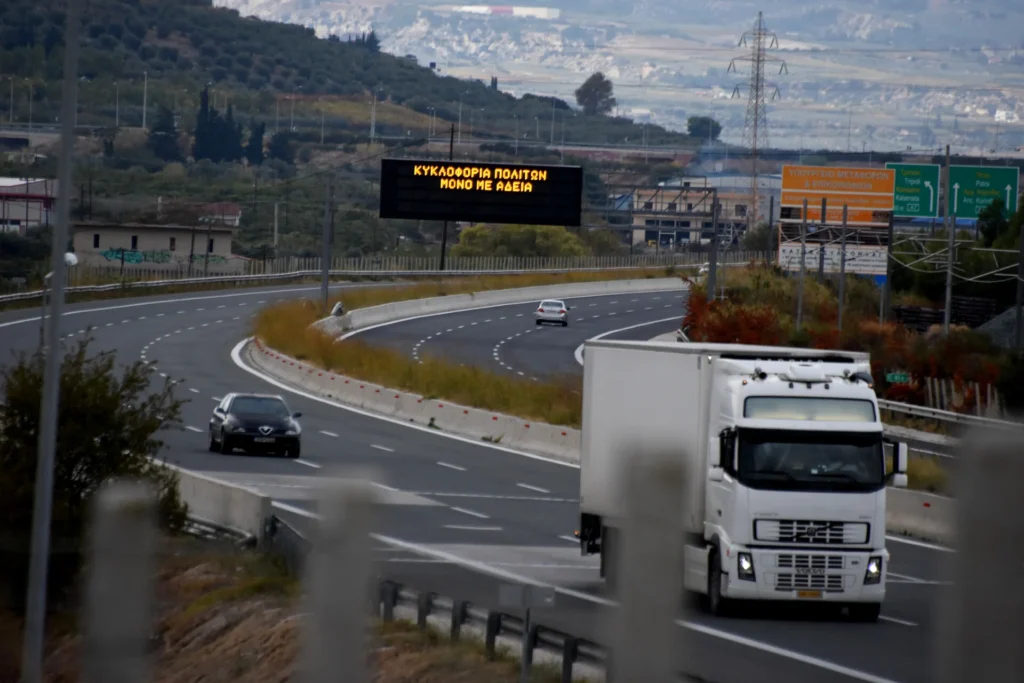
Livadia is 138 km northwest of Athens and is very easy to get there via the National Road E75. The National road is in perfect condition with signs and tolls. If you rent a car – I use Discover Cars – you can visit other popular destinations in the area such as :
- Thebes town: it has one of the best archaeological museums in Greece.
- The Ancient Theatre of Orchomenus and the large Mycenean Tomb of Minyas.
- The “Lion of Chaeronea” is the monument of the battle between Phillip II of Macedon and an alliance of some Greek city-states led by Athens.
- Distomo Massacre Memorial and Nazi Victims Museum.
- Seafront picturesque villages of Itea and Galaxidi.
If you don’t want to drive, you can take the KTEL buses or the trains from Athens that go directly to Livadia. There is also an app you can download. Look for “TRAINOSE”.
Final Thoughts
In summary, Livadia, Greece is a fascinating city that combines a charming blend of history, culture, souvlaki and natural splendor. So prepare yourself for an unforgettable journey into this hidden gem! Till next time, Evgenia❤️
Plan your Trip to Greece
Do you need a custom travel itinerary or a transfer within Greece? Are you traveling solo, with your family or friends and need a tailor-made multi-day tour or a transfer?
If yes, please visit my dedicated Plan My Trip Page for a personalized itinerary!
Travel Guides for Greece
Essential Information for Greece
- ‘Hello’ and ‘Thank You’ in Greek: “Ya sou” and “Efharisto”
- Booking.com: I use Booking.com mostly for Europe.
- Expedia: I use Expedia for the rest of the world.
- All-Inclusive Resorts in Greece
- FerryScanner to book ferries to the Greek Islands
- Rent an Affordable Car in Greece
- Athens Metro Website (timetables and ticket info)
- Trains (Hellenic Train)
- Public Buses KTEL
- Get Your Guide: For all your day or multi-day tours and city guide needs, I use Get Your Guide
- Emergency Numbers Anywhere in Greece: AMBULANCE 166 – FIRE 199 – POLICE 100– EMERGENCY NUMBER 112
